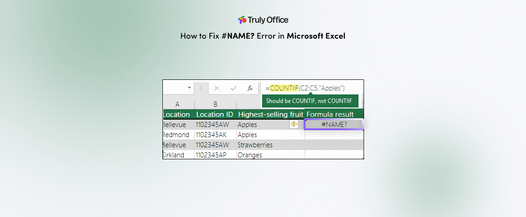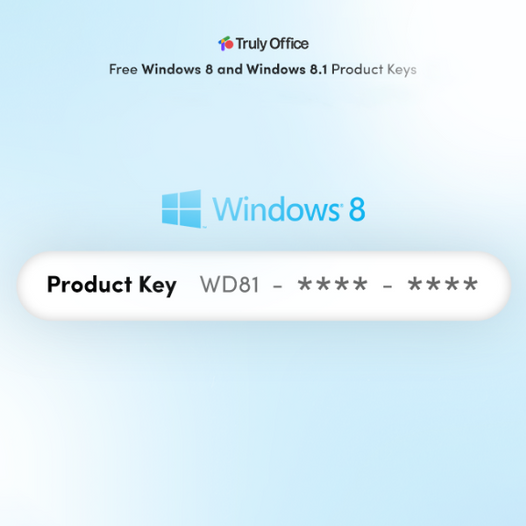The "IF contains" formula in Excel is a powerful tool, allowing you to control the flow of data manipulation and analysis within your spreadsheets. Mastering this formula can significantly enhance your Excel proficiency, enabling you to handle complex tasks efficiently.
Excel is an incredibly powerful tool for managing and analyzing data when you know how to leverage its potential. Among its vast repertoire of functions, the "IF contains" formula stands out as particularly useful. This guide aims to demystify this function, helping you to master the application of the "IF contains" statement. By understanding this formula, you can automate data manipulation tasks, perform complex conditional analyses, and enhance your overall productivity.
Whether you're an Excel novice or a seasoned pro looking to brush up your skills, this guide offers valuable insights that can take your Excel proficiency to the next level.
What is the "IF Cell Contains" Formula?
The generic formula used for "if cell contains" is as follows: =IF(ISNUMBER(SEARCH("abc",A1)),A1,"")
Here's a breakdown of what this formula does:
- SEARCH("abc", A1) scans the content of cell A1 for the text "abc" and returns the position of the text if found. If "abc" is not present, it returns an error.
- ISNUMBER checks whether the result of the SEARCH function is a number. If it is a number (meaning "abc" was found), it returns TRUE. Otherwise, it returns FALSE.
- The IF function then evaluates the ISNUMBER(SEARCH("abc",A1)) condition. If it's TRUE, it returns the content of cell A1 (i.e., the cell contains "abc"). If it's FALSE, it returns an empty string, which is represented by the double quotation marks "".
The "IF cell contains" formula in Excel is a powerful statement for categorizing and manipulating data based on specific criteria. It allows you to evaluate the contents of a cell and perform actions or return values based on given conditions. This feature is extremely useful for making decisions and creating logic tests with multiple outcomes in Excel.
What is an IF Statement in Excel?
In terms of formula structure, an IF statement comprises three parts: a logical test, a value if true, and a value if false. The logical test determines whether or not your statement will be true or false when evaluated by Excel. It can be as simple as A2>B2 (which checks whether cell A2 contains a number greater than cell B2) or as complex as =COUNTIF(A1:A10,"Apples")>=3 (which checks to see if 3 or more cells in range A1-A10 contain the word “Apples”).
The "value if true" parameter is what Excel will return if your Logical Test evaluates to TRUE. Likewise, "value if false" is what it will return if it evaluates to FALSE.
For example, suppose you wanted to check how many apples were sold last month without knowing how many were sold each day individually. You could use this formula:
- =IF(COUNTIF(A1:A10,"Apples")>=3,"More than 3 Apples Sold","Less than 3 Apples Sold")
This formula uses an IF statement with two parameters (value if true and value if false). It provides information about how many apples were sold without having access to individual sales numbers for each day.
Truly Sheets: An Affordable Alternative to Excel
Looking to boost your spreadsheet capabilities without breaking the bank? Consider Truly Sheets, an integral part of the Truly Office suite. It brings to the table all the functionality of Excel, coupled with a user-friendly interface and a significantly lower cost. With Truly Sheets, you can easily create complex spreadsheets, perform in-depth data analysis, and automate tasks with various formulas - all within a highly intuitive and accessible platform.
Just like Excel, Truly Sheets offers a comprehensive set of tools and functions, empowering users to master complex data management tasks with ease. Whether you're categorizing data, identifying text strings, or crunching numbers with conditional tasks, Truly Sheets has got you covered. Additionally, its budget-friendly pricing makes it an excellent choice for startups, small businesses, and individuals seeking effective data management tools without the hefty price tag.
Begin your journey towards efficient and affordable data management with Truly Sheets today. Step into a world where top-tier spreadsheet functionality doesn't mean top-tier costs. So why wait? Switch to Truly Sheets now and elevate your data management game without denting your budget.
Learn to Use "IF Cell Contains" Formulas in Excel
Now that you have a basic understanding of IF statements and their structure let's dive into how to use the IF contains formula specifically. This function allows you to check if a cell contains a specific value or text and perform an action based on the result.
If Cell Contains Any Value, Then Return a Value
Formula: =IF(ISBLANK(cell), "", "value_to_return")
This Excel formula is used to ascertain if a cell contains any data, whether numerical, textual or other information. When the cell is not empty and holds some form of data, the formula triggers and returns a specified value, indicating the presence of data within that cell. This is particularly useful for data validation and categorization, ensuring you can easily flag cells with content.
For example, using the =IF(ISBLANK(A2), "Yes", "No") formula, if cell A1 has any value (text, number, or anything), it will show "Yes." Otherwise, it will show "No."
Example:

If Cell Contains Text/Number, Then Return a Value
Formula: =IF(ISTEXT(cell), value_to_return, "") or =IF(ISNUMBER(cell), value_to_return, "")
This formula serves the purpose of differentiating cells that contain either text or numeric values and provides a way to label or categorize them with a specific value. By evaluating the cell's content and checking for the presence of either text or numeric data, it allows for the systematic classification of cells in a dataset based on their content type.
Let's consider an example where we need to check cell A2, and if it contains text, return "Yes". In this case, you can modify the formula to =IF(ISTEXT(A2), "Yes", ""). Since the A2 cell has text and not a number or date, the formula will output "Yes" to the designated cell.
Example:

With the formula =IF(ISNUMBER(A3), "Number", "Text"), if cell A1 contains a number, it will show "Number." If it contains text, it will show "Text."

If Cell Contains Specific Text, Then Return a Value
Formula: =IF(cell="text", value_to_return,"")
In Excel, this formula is employed to identify whether a cell contains a precise text string. If the specified text is found within the cell, the formula returns a predetermined value, facilitating the categorization or tagging of cells based on the existence of this specific text. This is particularly useful when you need to group or classify data based on particular keywords or phrases.
Using the formula =IF(A2="Hello", "Greeting", "No Greeting"), if cell A1 has the word "Hello," it will show "Greeting." If not, it will show "No Greeting."
Example:

If Cell Contains Specific Text, Then Return a Value (Case-Sensitive)
Formula: =IF(EXACT(cell,"case_sensitive_text"), "value_to_return", "")
Similar to the previous formula, this case-sensitive variant checks for the presence of an exact, case-matching text string within a cell. It returns a designated value only if the specific text is found with identical capitalization, making it ideal for situations where capitalization precision is essential in identifying and categorizing data.
Let's consider an example where we need to check the content of cell A2 to see if it contains the text "EXAMPLE." If it does, we want the formula to return "Yes." To achieve this, we can modify the formula to =IF(EXACT(A2,"EXAMPLE"), "Yes", ""). It outputs "Yes" if the cell contains the exact match in letter case.
Example:

If Cell Does Not Contain Specific Text, Then Return a Value
Formula: =IF(cell="text", "","value_to_return")
This formula is applied to determine if a cell does not include a particular text string. When the specified text is not present within the cell, the formula generates a predefined value, aiding in the differentiation and categorization of cells that lack the specified content. It is particularly useful for quality control and exclusion criteria in data analysis.
In our example, we check cell A4 for the text "example" and return a blank cell. To do this, use the formula =IF(A4="example", "", "No"). Since A4 contains "example," the formula results in a blank cell. For other cells, it outputs "No."
Example:

If Cell Contains One of Many Text Strings, Then Return a Value
Formula: =IF(OR(ISNUMBER(SEARCH("string1", cell)),ISNUMBER(SEARCH("string2",cell))), value_to_return, "")
This formula allows you to check if a cell contains any of a predefined set of text strings and, if so, returns a specific value. It is a versatile tool for categorizing data based on the presence of multiple potential keywords or phrases, streamlining the data classification process by considering a range of possibilities.
In our example, we're checking cell A2. We want to find "shirt" or "hoodie" and return "Valid." You can use the formula =IF(OR(ISNUMBER(SEARCH("shirt",A2)),ISNUMBER(SEARCH("hoodie",A2))),"Valid ",""). If A2 contains either of these words, the formula will output "Valid" in the result cell.

To search for more words, add them with ISNUMBER(SEARCH("string", cell)).
If Cell Contains Several of Many Text Strings, Then Return a Value
Formula: =IF(AND(ISNUMBER(SEARCH("string1",cell)),ISNUMBER(SEARCH("string2",cell))), value_to_return,"")
In this scenario, the formula assesses whether a cell contains multiple specified text strings and returns a value if all of these strings are simultaneously present. This advanced feature is valuable for complex data classification requirements, ensuring that cells are labeled based on the occurrence of a combination of specific text strings, offering precision in data organization.
In this example, we're checking cell A2 for both "shirt" and "white" to return "Valid." Use the formula =IF(AND(ISNUMBER(SEARCH("hoodie",A2)),ISNUMBER(SEARCH("black",A2))),"Valid ",""). If A2 contains both of these words, the formula outputs "Valid" in the result cell.
Example:

Conclusion
Utilizing the "IF contains" formula in Excel can dramatically enhance your data analysis and manipulation capabilities. These formulas allow you to set up intricate conditional tasks, freeing up your time for other important tasks and improving overall productivity. Mastering these formulas will enable you to categorize and tag data, identify specific text strings, and even assess case-sensitive scenarios at a glance.
While there may be an initial learning curve, the time investment will undoubtedly pay off. As you delve deeper into Excel, you'll uncover more ways these formulas can simplify and streamline your data management processes.
Remember, Excel is a powerful tool, and, like any tool, its effectiveness largely depends on the operator's skill. So, keep learning and experimenting with various formulas and functions to optimize your Excel proficiency!
Supercharge Your Productivity With Truly Office
Discover a new way to enhance your productivity with Truly Office - the ultimate alternative to Microsoft Office. Unlock a world of possibilities by exploring our website and discovering the power of Truly Office. Don't miss out on valuable writing tips, troubleshooting advice, and informative articles. Take your writing skills to the next level!
Ready to revolutionize your office suite? Dive deeper into our comprehensive suite of tools designed to make your work life easier. Join the growing community of satisfied users who have already made the switch to Truly Office.
Don't settle for the status quo. Remember, success starts with the right tools. Visit Truly Office now and experience a whole new level of productivity.





